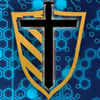Official Rules:
1. You can only compete in one heat.
2. You must have a way to video stream your workspace using Zoom (or TBD).
3. Prior to each heat, we will provide a key number that you must write legibly somewhere on camera and leave it for the entire heat.
4. Your video must show all work and your demonstration of successful completion.
5. You must show the sealed kit before the heat and open the box on camera.
6. You must disclose all equipment you are using or plan to use prior to the heat.
Scoring is based on time, completion, functionality (of the circuits you attempted to complete), neatness, and solder joint quality. If the top score is a tie, the fastest time across all the heats will be the winner.
Instructor: Al Williams
Al Williams started soldering around age 10. By the time he got his ham radio license in 1977 he'd built dozens of things, a few of which actually worked. These days Al writes for Hackaday and can't decide if that new microscope is a good deal because SMD parts are getting smaller or his eyesight is getting worse. Al's designs -- but not his soldering -- have been on the ocean floor and have orbited the Earth, but most of them have been somewhere in between.
 Lutetium
Lutetium


I have a trinocular-microscope (good for camera view) and a decent soldering iron, but I also have an LED magnifier, eye loupes and USB soldering irons. Since there is no category of scoring based on self-inflicted pain, should we just use whatever tools are most convenient as long as they do not encompass (solder paste, hot-air stations, toaster ovens, hot plates, and other reflow tools) which were stated as "off limits" in the email? Thanks!